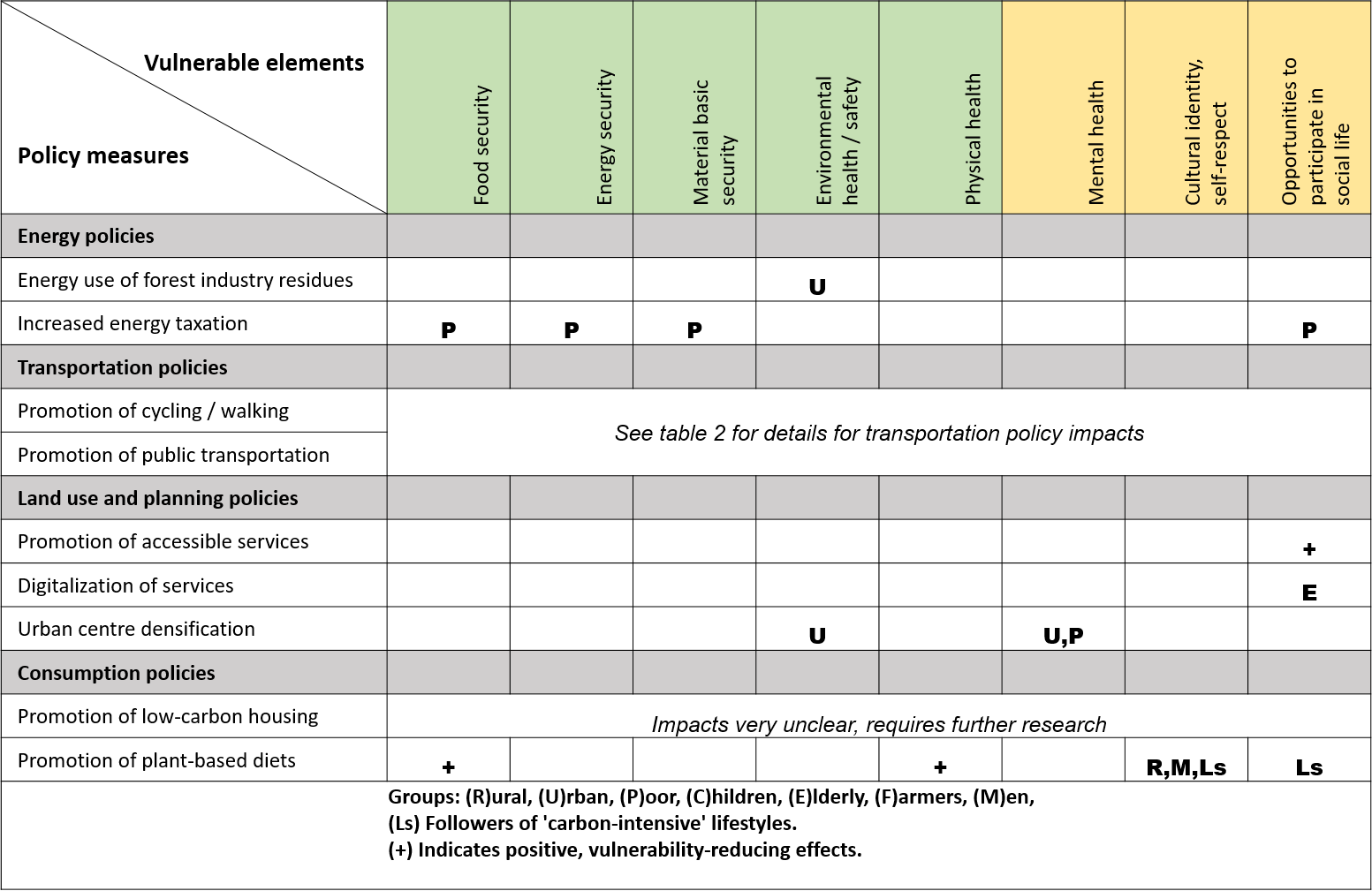4.2. Just transition

4.2. Just transition
When we are aiming at securing the preconditions for good life in the future, reaching the goal calls for a comprehensive sustainability transformation to reduce the environmental effects of human activity. As we have learned, the effects of the transformation affect nearly all human activity. Consequently, the transformation will have significant social and economic effects. Some of them are positive, but undesirable “side effects” are impossible to avoid due to the scale of the required changes and the unsustainability of current activity. Different actors also have very different premises and possibilities to participate in the transformation. For example, only relying on environmental actions that direct consumption may lead to an unjust situation: multinational companies with the best resources can act as pioneers in responding to the requirements of changing consumption, while smaller local companies cannot answer the change as quickly and may be forced to limit or cease their operation.
The “side effects” give rise to the need for a just transition: how can the transition towards an ecologically sustainable society be accomplished as justly as possible? This question was recognised in the global climate negotiations of 2018, where the participants published the Solidarity and Just Transition Silesia Declaration in order to account for the effects of climate actions on employment and regional economy.
At the time of writing these course materials, the discussion around the just transition is focused on the social, economic, and unintended effects of environmental actions, especially ones aiming to control climate change. The heart of the matter is that the control of climate change causes changes in business and employment. For example, in areas that are built around the coal industry, breaking away from fossil energy sources may bring forth mass unemployment and even collapsing economies. Therefore, political actions must be taken to ensure that such areas can also benefit from the new possibilities for employment and business brought forth by the transition.
When industrialisation was picking up speed in Central Europe, Africa and India, among others, villages were built around coal mining: the entire well-being of the area was founded on coal. The employment impact of the coal industry has already declined in many places since the peak years, for reasons other than climate actions. In Germany, the coal industry provided employment for over 700 000 people in the 1950s, but the freeing of energy trade and cheap oil eliminated more than 300 000 jobs from the industry in one decade. In the beginning of the 21st century, coal industry employed fewer than 100 000 people in the country. A just transition in the working life can be advanced, for example, by supporting training for new tasks and trades, supporting the diversification of the economic life of areas depending on the use of fossil energy, and creating new, more sustainable, jobs in the area.
In addition to work-related questions, just transition particularly concerns the equal opportunities of people to pursue good life in the world of strong environmental actions. An important question is whether the sustainability transformation reduces the possibilities of well-being of disadvantaged people in particular, and how such a risk can be reduced. Even though controlling climate change is necessary for securing equal possibilities of well-being, there is a risk that environmental actions themselves will increase social inequality. As we have learned, everyday actions – transportation, food, the heating of apartments and energy consumption – are the most significant sources of greenhouse gas emissions, and therefore environmental actions strongly affect the everyday life of people. The impact of environmental actions, especially on the well-being of the most vulnerable groups, can be evaluated, for example, in relation to the most important essential needs of humans.

Figure/Table. Environmental actions affect what kind of possibilities for good life different groups of people have. This table depicts one model for examining the effects of environmental policies on well-being and vulnerability (Kortetmäki & Järvelä 2021). Identifying the groups that are vulnerable to the undesirable effects of environmental policies helps to see what kind of social policy is needed to alleviate the inequality-increasing effects of environmental policies. The table also helps in evaluating the social acceptability of different policy options from the perspective of the effects on well-being.
The implementation of a just transition is a political question, and different models have been proposed for it, such as the “Green New Deal” in the United States and the “ecological reconstruction” in Finland. The models involve different assumptions and emphases, but what they have in common is the aspiration to find balance and justice: consumption and the use of natural resources should be reduced, and at the same time, meaningful livelihoods for citizens and a stable economy for society should be made possible.
